Introduction to Landing Pages
In the fast-paced world of digital marketing, landing pages play an indispensable role in driving successful campaigns. Unlike typical web pages, landing pages are meticulously crafted for a singular purpose: to convert visitors into leads or customers. This focused strategy is key to enhancing conversion rates and reducing the cost of acquiring new customers.
A landing page is a standalone web page designed specifically for marketing or advertising purposes. It serves as the destination where potential customers ‘land’ after engaging with a link from an ad, email, or social media platform. The primary objective is to guide these visitors towards a specific call to action (CTA), whether it be signing up for a newsletter, making a purchase, or learning more about a service.
To achieve high conversion rates, a landing page must be crafted with certain essential elements. These include a clear value proposition, strong visual appeal, compelling content, and persuasive CTAs. Additionally, incorporating social proof and ensuring consistency in branding can significantly bolster a landing page’s effectiveness. By focusing on these elements, businesses can create landing pages that not only capture attention but also drive meaningful conversions.
Crafting a Compelling Headline
A clear and concise headline is vital to capturing user attention and driving engagement on your landing page. Research shows that five times as many people read the headline compared to the body copy, underscoring its importance in content marketing efforts. As David Ogilvy famously stated, “On the average, five times as many people read the headline as read the body copy.” This makes the headline a pivotal element worth almost as much effort as the rest of your content.
To craft a compelling headline, start by incorporating a strong value proposition. It should clearly communicate the primary benefit you offer and how you solve a specific problem for your audience. Avoid complex language and keep it straightforward to prevent confusion.
Examples of successful headlines include the “How-to Headline”, which promises a solution, such as “How to Win Friends and Influence People,” and the “Agitator” headline, which addresses a pain point, like “Tired of [Annoying Problem X]? We Can Help.” These headlines are designed to engage and convert by aligning with the user’s needs and expectations.
Creating an Impactful Subheadline
An impactful subheadline plays a crucial role in reinforcing the main headline by providing additional context and clarity to entice readers further. While the headline captures attention, the subheadline ensures that visitors understand the deeper benefits and value of what is being offered.
To write persuasive subheadlines, aim for clarity and relevance. Avoid ambiguous language that might confuse potential customers. Instead, clearly address the reader’s pain points or needs, and hint at the solution your product or service provides. Use straightforward language and avoid jargon that might alienate your audience.
Effective subheadlines complement the headline and are specific to the product or service. For instance, a subheadline like “Unlock the door to a stress-free vacation today” supports a travel agency’s main headline. Similarly, “Experience the ultimate comfort with our premium bedding” adds depth to a retail brand’s promise.
| Good Subheadline | Bad Subheadline |
|---|---|
| “Transform your workflow with our innovative software solutions” | “The best way to do it” |
| “Achieve your fitness goals faster with our personalized plans” | “Our product is great” |
By carefully crafting your subheadline, you can enhance the appeal of your landing page and drive higher conversions.
Designing for Visual Impact
Creating a visually appealing landing page is essential for capturing the visitor’s attention and guiding them towards conversion. Branding consistency is crucial; it ensures that your landing page reflects your brand’s identity and maintains a cohesive look across all platforms.
To achieve a visually appealing design, consider these key elements:
- Color Scheme: Use colors that align with your brand and evoke the right emotions. A well-chosen color palette can increase brand recognition by 80%.
- Typography: Choose fonts that are readable and consistent with your brand’s style. Avoid using too many different fonts to maintain a clean look.
- Images and Graphics: High-quality visuals can significantly enhance user engagement. Ensure images are relevant and complement the content.
For effective layout and navigation, follow these best practices:
- Simplicity: Keep the layout simple and uncluttered. This helps visitors focus on the key message and call-to-action.
- Hierarchy: Use visual hierarchy to guide the user’s eye to the most important elements first.
- Responsive Design: Ensure the landing page is mobile-friendly, as a significant portion of traffic comes from mobile devices.
By focusing on these design elements, you can create a high-converting landing page that not only looks great but also effectively communicates your brand’s message.
Effective Call-to-Action Strategies
Creating a high-converting CTA is essential for any landing page aiming to drive user action. The most effective CTAs are clearly defined buttons with distinct shapes, colors, and compelling copy. Using verbs like ‘Start’, ‘Join’, and ‘Learn’ paired with persuasive words such as ‘Free’ or ‘Guaranteed’ can significantly boost engagement. It’s also crucial to convey urgency with phrases like ‘Limited offer’ or ‘Act now’.
For optimal placement, ensure your CTA is above the fold and surrounded by ample white space to make it stand out. This visibility reduces friction and encourages immediate user interaction. Utilizing contrasting colors further draws attention and enhances the visual appeal of the CTA.
“An effective CTA is not just about design but strategic placement and compelling language.”
Successful examples include ‘Get a Quote’, ‘Start Free Trial’, and ‘Get Your Free Trial’. These CTAs are effective because they clearly state the action and benefit, encouraging users to proceed with confidence. By implementing these strategies, your landing page can effectively guide visitors towards conversion.
Harnessing Social Proof
Social proof is a psychological phenomenon where individuals rely on others’ actions and opinions to guide their own decisions. In the realm of digital marketing, effectively leveraging social proof can significantly enhance the credibility and conversion rates of landing pages.
| Type | Description |
|---|---|
| Customer Testimonials | Endorsements from satisfied users showcasing product value. |
| User Reviews and Ratings | Feedback from users that influences purchasing decisions. |
| Social Media Mentions | Posts or mentions that demonstrate popularity and engagement. |
| Expert Endorsements | Recommendations from industry experts or influencers. |
Testimonials and reviews are particularly effective in building credibility. They serve as trust signals, acknowledging satisfied customers and attracting new ones. Positive feedback, especially when detailed with names and photos, adds a relatable human element.
“I was hesitant at first, but seeing all the positive reviews convinced me to give it a try. Best decision ever!” – Jane D.
Examples of effective social proof on landing pages include real-time review notifications, client logos, and industry awards. These elements not only enhance trust but also significantly influence buying decisions, making them indispensable for high-converting landing pages.
Content That Converts
In the realm of digital marketing, persuasive and informative content is a powerful tool that directly influences conversion rates. According to studies, well-crafted content can increase engagement by up to 80%. This shows the significance of addressing customer pain points effectively and offering solutions in a compelling manner.
Identifying these pain points—such as process inefficiencies or financial concerns—and providing clear solutions can foster trust and encourage action. For instance, addressing financial worries with tiered pricing or highlighting quick support access can significantly improve user experience.
To achieve this, a mix of content formats is essential. Strong, persuasive text can provide detailed information and engage the audience. Images serve as quick visual cues to capture attention, while videos can demonstrate product benefits dynamically, increasing conversion rates by up to 86% according to some studies.
By integrating these elements thoughtfully, landing pages can effectively convert visitors into loyal customers, fulfilling their needs and enhancing the overall user experience.
Enhancing with Visuals
Visuals play a pivotal role in user engagement on landing pages, capturing attention and conveying messages effectively. They can evoke emotions and significantly boost conversion rates by enhancing storytelling and understanding.
Among the types of visuals to consider are product images and explainer videos. Product images help users visualize the item in use, fostering a connection and aiding decision-making. Meanwhile, explainer videos provide dynamic demonstrations that can engage users and highlight the product’s benefits.
| Type of Visual | Benefits |
|---|---|
| Product Images | Visualize products, create empathy, boost understanding |
| Explainer Videos | Demonstrate usage, engage users, convey complex information |
To effectively incorporate visuals, ensure they complement the text and enhance overall user experience. Use bold, attention-grabbing visuals that align with the brand’s message. A/B testing can determine which visuals resonate best with your audience, optimizing for higher conversion rates.
Conclusion and Key Takeaways
Creating a high-converting landing page involves several essential elements. A compelling headline and subheadline grab attention and convey your value proposition. The design should be visually appealing, consistent with your branding, and feature a clear, standout call-to-action (CTA).
Social proof such as testimonials and reviews builds trust, while persuasive content addresses user pain points. Utilizing high-quality visuals like images and videos can significantly enhance user engagement. Remember, ease of navigation and providing visual feedback are crucial for a smooth user experience.
- Ensure all elements are cohesively designed for a seamless user journey.
- Use A/B testing to refine and discover what resonates best with your audience.
- Keep the design inclusive and accessible to widen user engagement.
By implementing these strategies, you can optimize your landing page to boost conversions and drive business success. Remember, continuous testing and iteration will ensure your landing page remains effective in a dynamic digital landscape.



